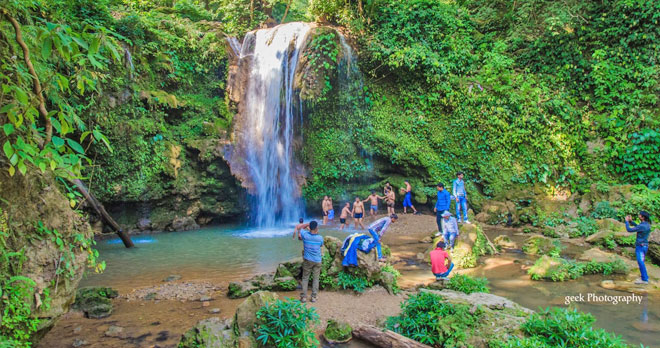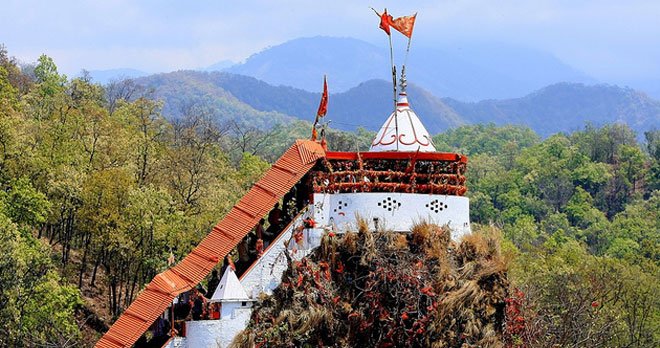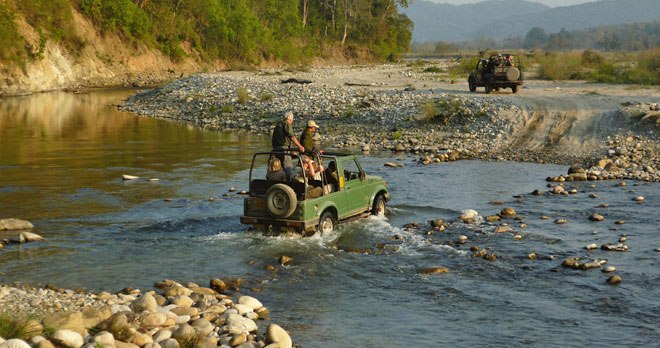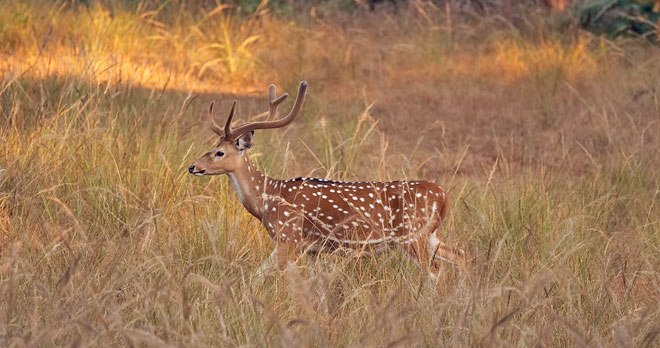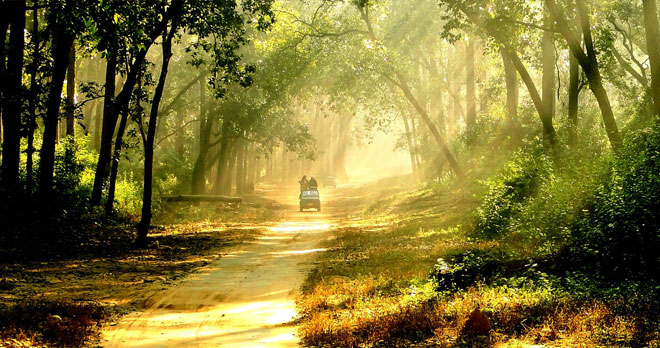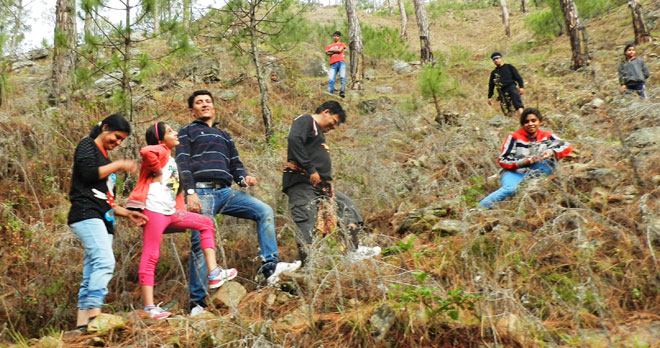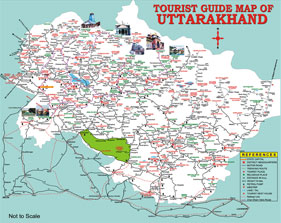Jim Corbett National Park
The Jim Corbett National Park is situated in the Nainital district of Uttarakhand and is the oldest national park in India which got established in 1936 by the name of Hailey National park. After India's independence the park was named as Ramganga National Park but later in 1956, it was renamed after Jim Corbett – the famous hunter turned conservationist and author, who played a major role in the establishment of the national park. Jim Corbett National park is one of the renowned Wildlife Sanctuary in India and is popular for the Royal Bengal tiger present in the sanctuary.
Jim Corbett National Park Tourist Places
Corbett Jungle Museum (Corbett Home): Corbett Museum is the place where Jim Corbett stayed during winters and the museum has his books like Man Eating Tiger, Man Eating Tiger of Kumaon etc. The museum also offers his personal items like, gun, fishing net, cap, bag and some of his photographs with tigers. The entry ticket of the museum is Rs. 5 for adult and Rs. 1 for student.
Garjia Temple: Garjia Maa Temple is situated in the mid of Kosi River near Ramnagar. The temple holds great importance amongst the locals. Almost every couple who visits Corbett National Park or Ramnagar visits this temple of Garjia Maa to take their blessings.
Kyari Camp: It is situated in the Kyari village to the east of the river Kosi. Kyari Camp is set in a village deep in the jungles of exotic locales of Kumaon region.
Sitabani Forest Reserve: This site is a birdwatchers' paradise and there is an ashram tucked away in the jungle. Panthers and other wildlife move to Sitabani when the tourist season is on in Corbett. This is an ideal place for doing wildlife photography.
Sitabani Temple: About 20 kms from Ramnagar is a place called Seeta Bani. Legend has it that Devi Sita, the consort of Lord Rama had entered into the lap of Mother Earth here. A fair is held here during Ram Navmi.
Dhangari Museum: Here you will watch the educational details about floras and faunas of Corbett Park with trophies of naturally dead animals i.e. Tiger, Leopard, Tusker, Deer, Sambhar and Crocodile etc.
Bijrani : The area in and around Bijrani once formed part of a shooting block. During the British period it was much famed for the quality of game hunting that it offered to shikaris.
Jhirna : JhirnaThis rest house lies just inside the southern boundary of the Park. The rest house lies on the road from Ramnagar to Kalagarh that runs in an east-west direction through the Park. Jhirna was a farming village until 1994 when it was successfully relocated under Project Tiger. The abandoned farmland is gradually reverting to a wild state and is being managed to develop grassland habitat. The nearby terrain consists of numerous sots and narrow gorges running through typically Shiwalik landscape. The hills to the north of Jhirna are covered with dense patches of bamboo. Apart from being a good habitat for tiger, leopard and deer, the place hosts other interesting mammals like sloth bear and wild boar. A variety of birds can also be enjoyed here.
Corbett Water Falls: The Corbett Waterfalls, a small nonetheless an awesome view, is from a height of about 60 feet and is in the backdrop of scenic greenish forest. Full Moon light colored waterfall is really worth-while to observe. The wide area around the water fall provides very good parking and camping facilities. It is a very nice picnic spot. A nearby attraction is 'Nature Walk' museum, where one can experience the pure nature in its primitive style and calm.
Sunrise Point: a highest peak in Corbett and its surrounding area at Bhuwankhal Village ( Kath ki Nao). It's also famous an oldest bungalow built by British. One can see both the rivers Kosi and Ramganga from the peak at a glance
Kalagarh Dam: It is situated at the south-western side of the Corbett National Park. It is multipurpose project to provide Irrigation, hydro electric power and flood relief. Work on Kalagarh Dam Project commenced in 1962 and it got completed in the year 1975.This very dam wrecked havoc with the ecological system of the region in 1970s but now attracts a great number of migratory waterfowl in the winters.
Ramnagar: It is situated 5 kms from Corbett National Park, in the Nainital district of Kumaon region of Uttarakhand state on the banks of Kosi River at an elevation of 345mts above sea level. Its proximity with Corbett national park and Nainital makes it even more popular destination. Ramnagar is the ideal spot for fishing camp and the place offers as an administrative centre for Corbett national park. Ramnagar is also famous for Litchi farming.
Safari Zones in Jim Corbett National Park
Jhirna: A densely wooded and grassland habitat, it makes for excellent bird viewing. The Great Hornbill is found in abundance here. Jhirna is home to a population of sloth bear and wild elephants and a growing tiger population. A large grove of 'Flame of the forest' adds drama to Jhirna. A strong prey base of nilgai, cheetal, sambhar and the wild boar also makes it an attractive area for the big cats, while a resident wild elephant and sloth bear population offer great sighting opportunities.
Bijrani: These forests range from those of pure Sal on the upper reaches, to deciduous mixed forests in the valley, along with three major grasslands. It sustains a variety of herbivores, and has a wide network of jungle roads, making Bijrani excellent tiger sighting territory. carved out of a shooting block, with a wide network of criss–crossing jungle roads, offers excellent tiger sighting opportunity. On Corbett's eastern boundary, Bijrani's forests are dense with a wide variety of vegetation: of pure Sal forests on the upper reaches and tropical moist, deciduous mixed forests in the valley and plains. Excellent water availability throughout the year and wide grasslands make it an exceptional habitat for a strong prey base and its predator.
Dhikala: This is the largest and most varied zone in Corbett, offering the best opportunities for overnight stays. Dhikala contains a diverse range of habitats: its higher reaches suit Ghoral, a goat antelope, while the Gharial and Maggars, as well as the great Mahaseer, inhabit the rivers below. The hog deer is also exclusive to Dhikala. Dhikala offers the most varied terrain in all and, if booked well in advance, the widest range of Forest Rest House accommodations in the park. This block of forest has the Ramganga river stretch through its middle, emptying into a wide, multiple–necked reservoir.
Durga Devi: This range is famous for bird watching and fishing 'Mahasheer', a large fish species. Durga Devi is at north–east corner of Corbett Park, birds species like maroon orile, great headed fishing eagle, little forktail and many more. Mandal and Ramganga river in this forest attracts wild elephants, leopards and Tigers.
Sonanadi: A centre range in the Corbet National Park, Sonanadi range is famous for wildlife beauty with amazing flora and fauna. Over 550 species of birds are recorded here with leopard, tiger, cheetal, sambhar and raptiles.








